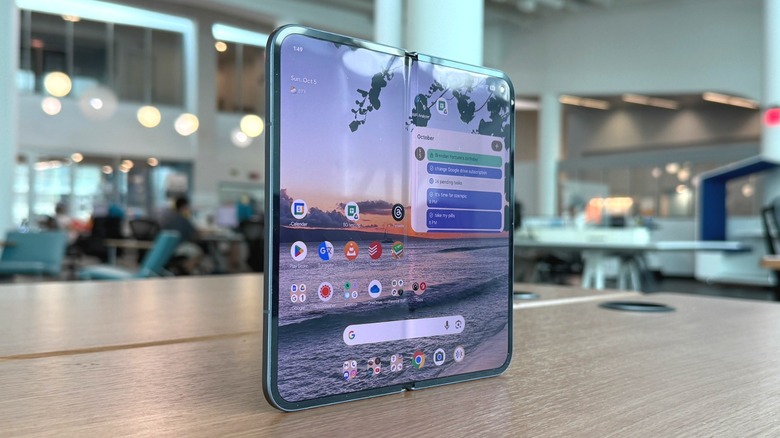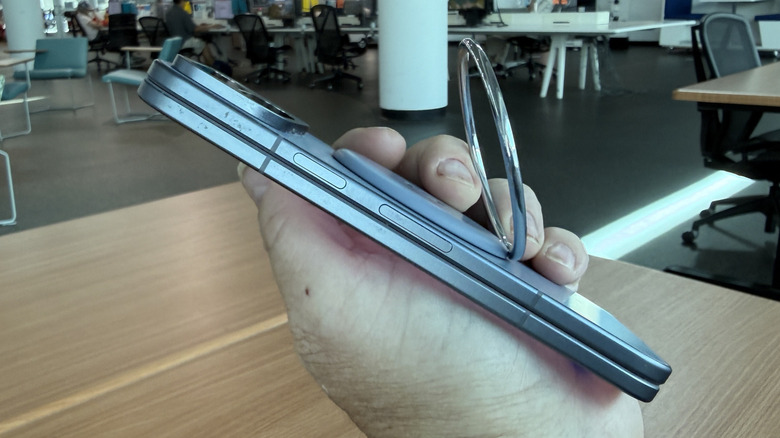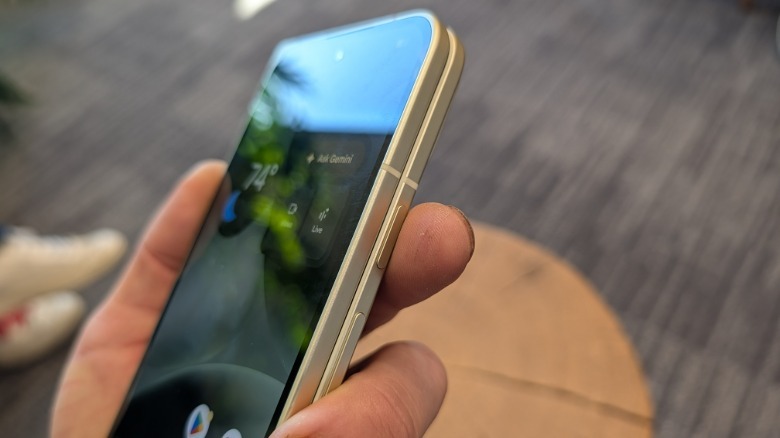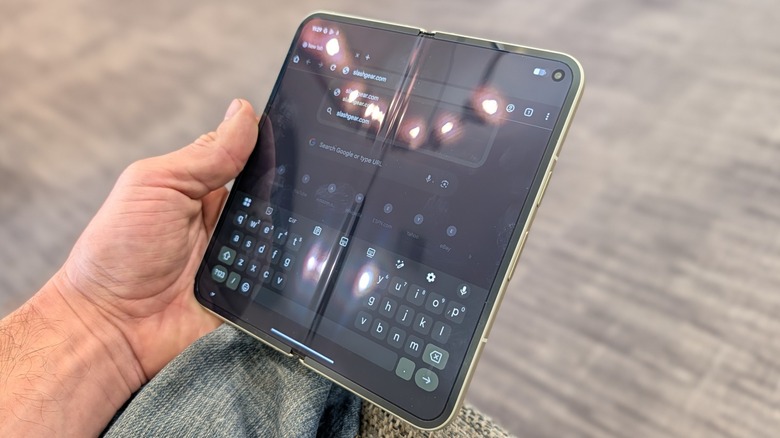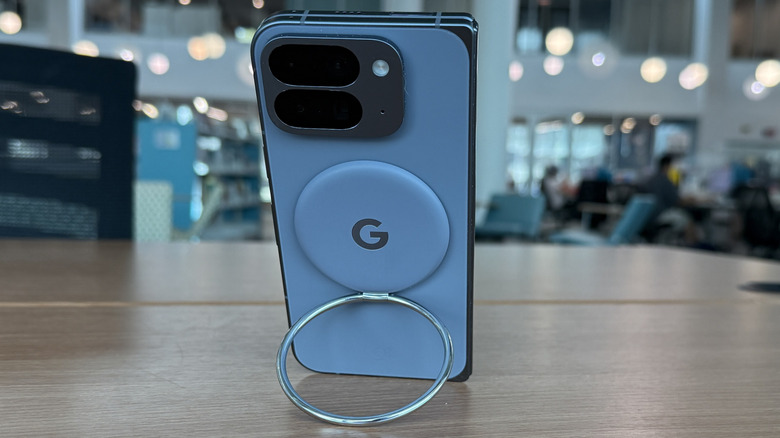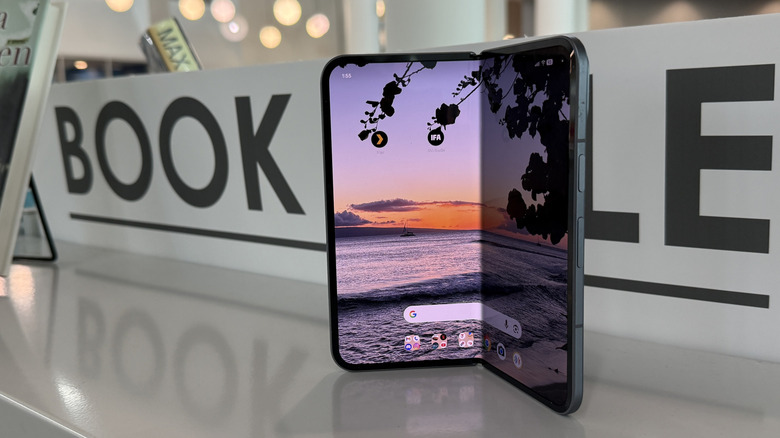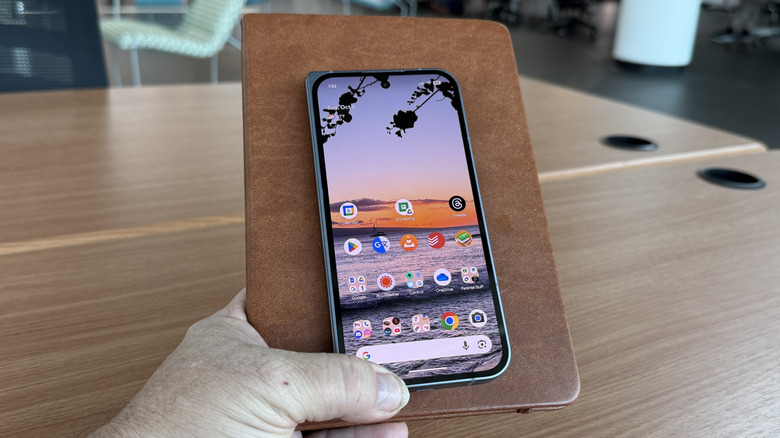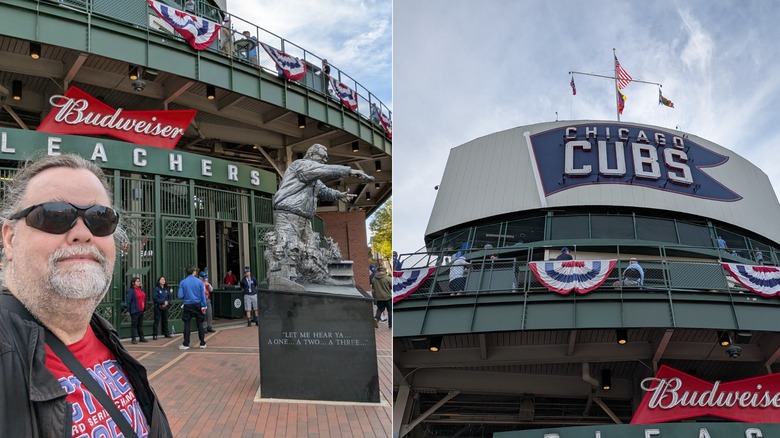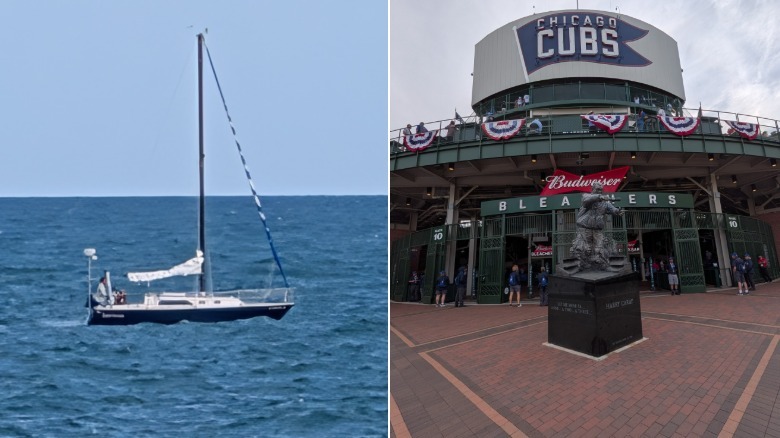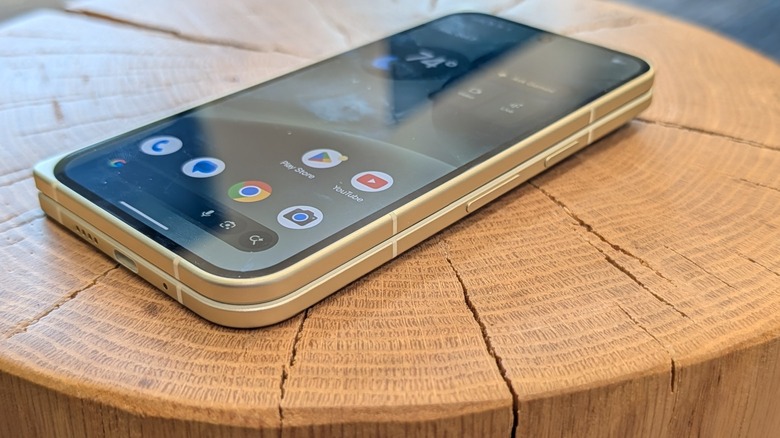Google Pixel 10 Pro Fold Review: The Features You Can't See Give It Its Edge
We may receive a commission on purchases made from links.
Let's play a game. The game is called give and take. For everything you take, you also need to give. That's what you get when you get the Google Pixel 10 Pro Fold. It's like one big game of give and take. This phone is excellent in a lot of ways — or it would be, if not for its chief competitor in the U.S. — the Samsung Galaxy Z Fold 7. Taken on its own, the Google Pixel 10 Pro Fold is a nice upgrade over its predecessor, the Pixel 9 Pro Fold.
But we live in a world where the Samsung Galaxy Z Fold 7 exists and has shown all of us what a foldable is capable of — and we're not even going to discuss foldables from overseas. Google has enough competition right here. Some may argue that it's not fair to judge a phone by its competitor in a review. They say we should review a phone based on its own merits.
Based on its merits, the Pixel 10 Pro Fold is a nice upgrade. In some ways, it's a pioneer ahead of even the Samsung Galaxy Z Fold 7. But it's the game of give and take that we need to play in order to understand what this phone has, and what it doesn't. That's what I set out to find out. I've been using a Google Pixel 10 Pro Fold review sample from Google for about a week, and this is my full review.
Bigger, faster, stronger
The Pixel 10 Pro Fold's hardware is arguably the biggest case of give and take. Let's get this out of the way now — the hardware is a lot thicker and heavier than the Fold 7, and it's really not even close. The hardware is very similar to the Pixel 9 Pro fold. It's one gram heavier and 0.1 mm thicker when open. But compared to the Z Fold 7, the Pixel 10 Pro Fold is 20% heavier and almost 20% thicker when closed. That's not a little.
When it comes to thickness, we're talking about a millimeter, which to be perfectly honest isn't that big of a deal. But when combined with a 20% weight increase this is a different conversation.
Of course, one big upside is the Pixel 10 Pro Fold is the first book-style foldable with IP68 water and dust resistance. If you want to take this phone to the beach — in theory — you'll be just fine. This is a phone that does not feel fragile — a feat for a foldable, to be sure.
Also, there's more good news: Last year's Pixel 9 Pro Fold was a delight to use while closed, and so is the Pixel 10. Taken on its own, Google's engineers deserve a lot of credit for only adding 1 gram of weight and 0.3mm of thickness to get this phone an IP68 rating.
More power, more storage
This phone also comes with Google's Tensor 5 processor which is not going to break any speed records. That's not a new thing — Tensors have lagged behind processors like the Snapdragon 8 series for as long as it has been around. Try to download Geekbench from the Play Store and lo and behold, it's not available. That's not a good look.
But the Tensor 5 processor is built on a 3nm process which speaks well for power efficiency — and we'll talk about that in a little bit. I tested the phone's power using "Asphalt Legends" and the game ran perfectly, even during longer play sessions. You won't be playing AAA titles like "Death Stranding" and you might not want to try to export a super-lengthy 4K video, but overall, the Tensor 5 is a strong performer for everyday tasks.
You also get a 1TB option, which is a nice upgrade over last year's phone, though my review sample came with the base 256GB of storage. That's not an upgrade over last year, nor is the 16 GB of RAM on board, but the extra storage over what has become a paltry 128GB in 2025 is a nice touch.
Finally, since this is a book style foldable, we need to address the elephant in the room. The crease is alive and well in 2025 and it is particularly present on the Pixel 10 Pro Fold. When I first saw the crease, I thought I had stepped back in time to 2021, because Google is making no effort to flatten this thing out. Personally, I don't care, but a vocal minority of you will.
One more thing
Pixel Snap is built into all of Google's smartphone hardware in 2025 and that makes me deliciously happy. Pixelsnap, is basically Apple's MagSafe system for Pixels. MagSafe, the circle of magnets that affixes various accessories to the back of the phone, including chargers, is a wonderful and long overdue addition to the Android ecosystem. Credit where it's due, this is part of the Qi2 standard, but for all intents and purposes, it's Pixel MagSafe without the trademark.
Google also launched a whole ecosystem of accessories to take advantage of the magnets built in. I've been enjoying the Pixelsnap Ring (as you'll see in the photo above) a lot more than I thought I would. The only thing it's missing is the ability to pass-through wireless charging (like the OnSnap phone grip can). Additionally, Google launched wireless chargers and cases to go with its lineup of phones — all of which support the magnetic ring as well. It's really cool to see first-party manufacturers add the magnets to their hardware, the way nature intended.
Pixel's software gives and takes
Of course, what comes with the Pixel name is the Pixel software. It's still one of my favorite skins of Android, but even the software gives and takes. My favorite part about using a book-style foldable is the multi-tasking, or at least it has been since the OnePlus Open. That 90/10 multitasking is excellent for this application. But Google gatekeeps it at two apps, rather than the three that a phone like the Honor Magic V5 is capable of.
Veo 3 (AI video generation tool) is also available through the Gemini app (and the Pixel 10 Pro Fold comes with a year of Google AI Pro) but you're limited to three videos per day, which is a little bogus. You get all the extras with the Pixel like crash detection, Pixel drops, seven years of software upgrades and more, all of which are great, and make the Pixel worth playing with, but in the meantime competitors like the Galaxy Z Fold 7 are also tripling down on AI features, so the clock is ticking — and competitors don't require a subscription for their best features.
Battery life is stellar
Put simply, the Google Pixel 10 Pro Fold has excellent battery life, full stop. On its hardest day, I took the Pixel 10 Pro Fold out to a baseball game at Wrigley Field. That included 25 miles of navigation by electric bike — you may remember the Engwe LE20 I tested about a year ago — and numerous photos and videos shot on site. Oh, and by the way, I also streamed the game itself (I didn't say I went inside the park) and podcasts before and after. All told, I streamed audio for around six hours, navigated for about three, took a couple of hundred photos and videos, and at the end of all that I still had 20% left in the tank when I went to bed.
That represents as hard a day as I'll ever put on a phone, and it just smiled and laughed its way through it all. That's ridiculous battery life and the Pixel 10 Pro earns its battery chops. I frankly can't wait to take this phone to CES, because I get the feeling it will be fine throughout the day on the show floor, and even if it's not, Pixelsnap and a battery, and we're good to go.
Cameras Are Just Fine -- for a Pixel
Of course, the signature for any Pixel phone is in the cameras. This is a foldable phone, and as a rule foldable cameras won't be as good or feature complete as the non-folding counterpart, and that is certainly the case here. The Pixel 10 Pro fold comes with a 48-megapixel main camera, 10.8-megapixel telephoto camera with 5x optical zoom, and a 10.5-megapixel ultrawide camera with a fairly respectable 127-degree field of view.
During the day, these cameras are all quite good, though you will want to stop before you go beyond the advertised 5x optical zoom. If you venture past that point, photos become muddy and lose all depth. It's not pretty. On a phone screen, the photos at 10x look just ok, but at the maximum zoom of 20x, even a phone screen fails to live up to anything approaching usable.
Macro photos are really good though. I grabbed some shots of some plants — typical macro focus fare, and they came out nice and sharp with good bokeh in the background. So as long as you're willing to stay within the confines of the glass.
Day and night difference
At night, things take a turn. Video — the enemy of nighttime photography — in particle gets pretty bad. Video resolution is grainy and blown out. Night sight video with video boost helps a lot, but that's a specific mode you need to remember to enable prior to shooting. Plus, it takes time to process it in the cloud, so it's not available right away.
Photos at night are generally just ok — social media good. Some photos, particularly with the ultrawide lens resulted in really harsh grain and in one case an unrecognizable face. The 5x telephoto also loses depth and definition which is obviously not ideal. Again, it's okay on a phone screen, but anything larger is going to encounter problems.
My overall impression of the Pixel 10 Pro Fold camera is it doesn't hold up to the Pixel's reputation as an amazing shooter anymore, and that's a shame. I understand this is a foldable and there will be compromises, but it flies in the face of Pixel's reputation, and it's time for Google to clean that up.
Pixel 10 Pro Fold price, availability, and final verdict
The Pixel 10 Pro Fold is available from Google's store, from Google on Amazon, and from select retailers and ships on October 9, 2025. It costs $1,799 barring, of course, any carrier deals or other discounts. On the face of it, it's hard to deny that this phone is worth it. The durability alone should give peace of mind to potential customers.
Foldables as a category are still expensive, and at this price level, you shouldn't have to pick your compromises, but alas, you do. Do you want the durability and IP rating of the Pixel 10 Pro Fold, or do you want the slim form factor offered by others in the category. In 2025, this phone feels bulky, and a tad dated, but it comes with protection that no other phone in its class offers. Battery optimization here, too, really takes the cake in this foldables market.
The cameras are less than ideal, for sure. If you confine your photography to well-lit situations, you'll be in good shape, but as soon as the lighting gets worse, your photos will follow. I got the same impression from the Pixel 10 Pro as well, and that's a shame. I hate to see the Pixel slipping like this, and I want to see it do better.
But overall, I can't condemn the phone on that attribute alone. There are just as many "gives" as "takes" in this phone, so there is value here, but it's a different value than the Pixel name usually offers.
